All your favorite posts, one swipe away
Essays - Blog Posts
i don’t know how anyone could possibly risk plagiarising on purpose like i am so god damn terrified of accidental plagiarism that every time i submit something on turnitin i can literally feel my individual arm hairs standing on end as i wait for the police to show up at my door and arrest me for writing a string of words too similar to some paper about the mating habits of hoot owls from 1965
Im writing an expanded essay from my post about Love, Vulnerability and Blindfolds in jjk.
I need help answering these questions
Love
What is love?
How is love seen in (mainstream) society?
How is love thought of by allo people (people who're not a-spec)?
How is love thought of by a-spec people?
How is love represented in jjk?
What do the characters of jjk think of love?
What do they say about it?
Blindfolds
What is a blindfold?
What does it do?
How is it used?
Who wears them?
Why are they important?
Who do the characters of jjk associate blindfolds with?
Why is it/that character important?
Vulnerability
What does it mean to be vulnerable?
How does mainstream society see vulnerability?
Who seems to be (the most) vulnerable in society/jjk?
What does the protag/mento Gojo Satoru think of vulnerability?
What does Ryomen Sukuna think if vulnerability?
What does he do when faced with vulnerability?
Has he ever been vulnerable before?
Answer any and all questions youd like. I'm just gonna write an extended essay on the topic
What is with the Dreamers' Houses?!?! Part 4.0 : What We Know that We Don't Know
At last! We have analyzed all the Dreamers' houses!
One last thing about the design of the Dreamer's houses and how they reflect each Dreamer's character. Throughout this analysis, we have been discussing what we can tell about the Dreamer's character from what we see, but we have yet to discuss about what we don't see.
With Herrah, we see the entirety of her den while we are barred from most of the Village. As such, we can guess more about Herrah's character than her people. Though I must admit that there is a bunch we can’t see due to being part dragon and part plant, but not part spider. Which means we can’t climb to the ceiling. But we DO see most of her house compared to most of the Dreamers. How this translates to the essay is all that we don’t see of Herrah is because we don’t have access to Weaver culture.
But alas, I still must guess how much we don’t know we don’t have access to in Herrah’s den. We must be missing more than Hornet's baby clothes!
With Monomon, we can guess that there is more to the Achieves, such as the classrooms, but that is a mere guess so we cannot comment on Monomon's character in that regard. But with Lurien…
We are canonically barred from seeing the entire Spire.

The green arrow is pointing to another hallway which we cannot enter in game. We know that this is another hallway as the wallpaper design is blurred out due to distance, unlike the wallpaper right next to Little Knight.
For reference, this screenshot was taken right after you successfully got past the part which requires Monarch Wings and takes you up into Lurien's Spire. AKA. Right at the bottom of the Spire. Which means THERE ARE ENTIRE SECTIONS OF THE WATCHER'S SPIRE RIGHT UP TO THE BALLROOM WHICH WE DON'T SEE! Check this map here!

Yellow marks the Door on the second level. Blue is the entire area that we are barred from seeing.
This is not the only section we are barred from seeing.

The Red is the entire section of the Spire which we don't see. Remember, we only go up the elevator to Lurien which is reflected in the map.
Now, do you remember these hallway pictures I showed you? The ones where Team Cherry showed 3-D in a 2-D world?


In order to achieve this effect, that window must be some ways away from the main hallway where we are standing. Far enough to create enough distance for a hallway by the window. Meaning there is a WHOLE ANOTHER HALLWAY leading who knows where!
There is another possible section of the Spire that we are unable to access.

These appear to be supporting the Watcher's Spire. Now, they could either be pillars and thus inaccessible to anyone, not just the player. Or, they are other towers supporting the main tower to the Spire, which means that not only is there entire section worth the height of the main Spire which we can't see, but whole towers as well!
Again, this is speculation. If anything, these towers outside Lurien's Spire are most likely supports for his own Spire as something needs to support the weight of the tallest spire in the City.
And we haven’t even touched the rooms belonging to the servants!
Remember this?

From: Hollow Knight: How To Defeat The Watcher Knights
This hiddie hole belongs to the rope that holds the chandelier which we can drop on one of the Watcher Knights, dropping the 6 bosses to 5 bosses.
How many hidden corners and passages are in the Watcher’s Spire? How many are we unaware of? Does every chandelier have a little hiddie hole like this one? Did Lurien ever use one of these servant passages and hiddie holes himself?
Now what about the Watcher Knights themselves?
You cannot tell me that these guys lived in Lurien’s ballroom. Where were their barracks? Where did they keep their weapons and gear? Where did they train? Surely Lurien wouldn’t outsource his Watcher Knights’ gear and training from his Spire, opening himself to possible assassination attempts? This bug had 15 Watcher Knights. I think he was concerned about getting attacked. So where do these Watchers sleep, train, and relax? We have half an entire Spire unseen.
Another question regarding Lurien’s servants. Remember how Lurien has a butler? Depending on how much Team Cherry wants to draw on medieval history, Lurien’s butler could have a different responsibility than modern day butlers. Modern butlers handle everything in the house: managing the daily operations of a household, keeping inventory of household supplies, maintain the cleanliness of the estate, etc.
Note how I said modern butlers. In medieval times, all those duties belonged to the head steward. The butler had a different job. He was the most trusted servant and confident of the head of house. He had to be in order to be trusted with the keys to the wine cellar! Or as it was called, the buttery. If Lurien’s butler had this job, then where is Lurien’s wine cellar? Where are the kitchens?
Of course, this doesn’t impact Lurien’s character too much as we don’t imagine him cooking. And we need to beeline towards Lurien to break the seals and open the Black Egg Temple, so we can’t take a detour towards the kitchens.
Doesn’t change the fact I would love to see Team Cherry or the fans develop the Dreamers’ houses more, especially Lurien’s Spire.
All the locations mentioned above beg a serious question: how much of Lurien's character do we not know simply because we cannot see his entire house? If everything that we do see speaks of a fortune worth of information, how much more is hiding from us?
Now take this to Herrah and Monomon. How much of them do we not know? What about their interactions with each other? Team Cherry had originally planned to give us individual boss fight rooms for each Dreamer. How much of Herrah, Monomon, and Lurien's characters will we never know because we never saw those rooms?
With that, I shall end this essay and leave you to your thoughts! It has been a long journey and I hope you dear reader learned something new. Please reblog any of your thoughts or ideas inspired by this essay!
If you wish to read more of the Essay, click one of these links below.
Part 1.0: Herrah's Den : Here
Part 2.0: Monomon's Archives: Here
Part 3.0: Lurien's Spire: Here
Part 3.25: Lurien's Spire: Windows and Colors: Here
Part 3.5: Even More of Lurien's Spire. Here
Part 3.7: What is WRONG with Lurien's Spire?: Here
Part 3.8: Even, even More of Lurien's Spire: Secret Room: Click here
Part 3.9 Watcher Knight Boss Room! Here
Link to essay on Ao3: Here
Why does a fucking muse have to come around an hour before an assignment is due and be like "here is The Perfect Idea"
The trick to long paper's to write some fluff To make it seem relevant, cite some stuff (I in no way endorse such a method, of course) Then pray your professor won't sight your bluff - Mod M

Highly recommend this book of collected essays written by Arab women journalists! ✨
Essays
Here’s a (non-exhaustive) list of essays I like/find interesting/are food for thought; I’ve tried to sort them as much as possible. The starred (*) ones are those I especially love
also quick note: some of these links, especially the ones that are from books/anthologies redirect you to libgen or scihub, and if that doesn’t work for you, do message me; I’d be happy to send them across!
Literature + Writing
Godot Comes to Sarajevo - Susan Sontag
The Strangeness of Grief - V. S. Naipaul*
Memories of V. S. Naipaul - Paul Theroux*
A Rainy Day with Ruskin Bond - Mayank Austen Soofi
How Albert Camus Faced History - Adam Gopnik
Listen, Bro - Jo Livingstone
Rachel Cusk Gut-Renovates the Novel - Judith Thurman
Lost in Translation: What the First Line of “The Stranger” Should Be - Ryan Bloom
The Duke in His Domain - Truman Capote*
The Cult of Donna Tartt: Themes and Strategies in The Secret History - Ana Rita Catalão Guedes
Never Do That to a Book - Anne Fadiman*
Affecting Anger: Ideologies of Community Mobilisation in Early Hindi Novel - Rohan Chauhan*
Why I Write - George Orwell*
Rimbaud and Patti Smith: Style as Social Deviance - Carrie Jaurès Noland*
Art + Photography (+ Aesthetics)
Looking at War - Susan Sontag*
Love, sex, art, and death - Nan Goldin, David Wojnarowicz
Lyons, Szarkowski, and the Perception of Photography - Anne Wilkes Tucker
The Feminist Critique of Art History - Thalia Gouma-Peterson, Patricia Mathews
In Plato’s Cave - Susan Sontag*
On reproduction of art (Chapter 1, Ways of Seeing) - John Berger*
On nudity and women in art (Chapter 3, Ways of Seeing) - John Berger*
Kalighat Paintings - Sharmishtha Chaudhuri
Daydreams and Fragments: On How We Retrieve Images From the Past - Maël Renouard
Arthur Rimbaud: the Aesthetics of Intoxication - Enid Rhodes Peschel
Cities
Tragic Fable of Mumbai Mills - Gyan Prakash
Whose Bandra is it? - Dustin Silgardo*
Timur’s Registan: noblest public square in the world? - Srinath Perur
The first Starbucks coffee shop, Seattle - Colin Marshall*
Chhatrapati Shivaji Terminus, Mumbai’s iconic railway station - Srinath Perur
From London to Mumbai and Back Again: Gentrification and Public Policy in Comparative Perspective - Andrew Harris
The Limits of “White Town” in Colonial Calcutta - Swati Chattopadhyay
The Metropolis and Mental Life - Georg Simmel
Colonial Policy and the Culture of Immigration: Citing the Social History of Varanasi - Vinod Kumar, Shiv Narayan
A Caribbean Creole Capital: Kingston, Jamaica - Coln G. Clarke (from Colonial Cities by Robert Ross, Gerard J. Telkamp
The Colonial City and the Post-Colonial World - G. A. de Bruijne
The Nowhere City - Amos Elon*
The Vertical Flâneur: Narratorial Tradecraft in the Colonial Metropolis - Paul K. Saint-Amour
Philosophy
The trolley problem problem - James Wilson
A Brief History of Death - Nir Baram
Justice as Fairness: Political not Metaphysical - John Rawls*
Should Marxists be Interested in Exploitation? - John E. Roemer
The Discomfort You’re Feeling is Grief - Scott Berinato*
The Pandemic and the Crisis of Faith - Makarand Paranjape
If God Is Dead, Your Time is Everything - James Wood
Giving Up on God - Ronald Inglehart
The Limits of Consensual Decision - Douglas Rae*
The Science of “Muddling Through” - Charles Lindblom*
History
The Gruesome History of Eating Corpses as Medicine - Maria Dolan
The History of Loneliness - Jill Lepore*
From Tuskegee to Togo: the Problem of Freedom in the Empire of Cotton - Sven Beckert*
Time, Work-Discipline, and Industrial Capitalism - E. P. Thompson*
All By Myself - Martha Bailey*
The Geographical Pivot of History - H. J. Mackinder
The sea/ocean
Rim of Life - Manu Pillai
Exploring the Indian Ocean as a rich archive of history – above and below the water line - Isabel Hofmeyr, Charne Lavery
‘Piracy’, connectivity and seaborne power in the Middle Ages - Nikolas Jaspert (from The Sea in History)*
The Vikings and their age - Nils Blomkvist (from The Sea in History)*
Mercantile Networks, Port Cities, and “Pirate” States - Roxani Eleni Margariti
Phantom Peril in the Arctic - Robert David English, Morgan Grant Gardner*
Assorted ones on India
A departure from history: Kashmiri Pandits, 1990-2001 - Alexander Evans *
Writing Post-Orientalist Histories of the Third World - Gyan Prakash
Empire: How Colonial India Made Modern Britain - Aditya Mukherjee
Feminism and Nationalism in India, 1917-1947 - Aparna Basu
The Epic Riddle of Dating Ramayana, Mahabharata - Sunaina Kumar*
Caste and Politics: Identity Over System - Dipankar Gupta
Our worldview is Delhi based*
Sports (you’ll have to excuse the fact that it’s only cricket but what can i say, i’m indian)
‘Massa Day Done:’ Cricket as a Catalyst for West Indian Independence: 1950-1962 - John Newman*
Playing for power? rugby, Afrikaner nationalism and masculinity in South Africa, c.1900–70 - Albert Grundlingh
When Cricket Was a Symbol, Not Just a Sport - Baz Dreisinger
Cricket, caste, community, colonialism: the politics of a great game - Ramachandra Guha*
Cricket and Politics in Colonial India - Ramchandra Guha
MS Dhoni: A quiet radical who did it his way*
Music
Brega: Music and Conflict in Urban Brazil - Samuel M. Araújo
Color, Music and Conflict: A Study of Aggression in Trinidad with Reference to the Role of Traditional Music - J. D. Elder
The 1975 - ‘Notes On a Conditional Form’ review - Dan Stubbs*
Life Without Live - Rob Sheffield*
How Britney Spears Changed Pop - Rob Sheffield
Concert for Bangladesh
From “Help!” to “Helping out a Friend”: Imagining South Asia through the Beatles and the Concert for Bangladesh - Samantha Christiansen
Gender
Clothing Behaviour as Non-verbal Resistance - Diana Crane
The Normalisation of Queer Theory - David M. Halperin
Menstruation and the Holocaust - Jo-Ann Owusu*
Women’s Suffrage the Democratic Peace - Allan Dafoe
Pink and Blue: Coloring Inside the Lines of Gender - Catherine Zuckerman*
Women’s health concerns are dismissed more, studied less - Zoanne Clack
Food
How Food-Obsessed Millennials Shape the Future of Food - Rachel A. Becker (as a non-food obsessed somewhat-millennial, this was interesting)
Colonialism’s effect on how and what we eat - Coral Lee
Tracing Europe’s influence on India’s culinary heritage - Ruth Dsouza Prabhu
Chicken Kiev: the world’s most contested ready-meal*
From Russia with mayo: the story of a Soviet super-salad*
The Politics of Pancakes - Taylor Aucoin*
How Doughnuts Fuelled the American Dream*
Pav from the Nau
A Short History of the Vada Pav - Saira Menezes
Fantasy (mostly just harry potter and lord of the rings)
Purebloods and Mudbloods: Race, Species, and Power (from The Politics of Harry Potter)
Azkaban: Discipline, Punishment, and Human Rights (from The Politics of Harry Potter)*
Good and Evil in J. R. R. Tolkien’s Lengendarium - Jyrki Korpua
The Fairy Story: J. R. R. Tolkien and C. S. Lewis - Colin Duriez (from Tree of Tales)*
Tolkien’s Augustinian Understanding of Good and Evil: Why The Lord of the Rings Is Not Manichean - Ralph Wood (from Tree of Tales)*
Travel
The Hidden Cost of Wildlife Tourism
Chronicles of a Writer’s 1950s Road Trip Across France - Kathleen Phelan
On the Early Women Pioneers of Trail Hiking - Gwenyth Loose
On the Mythologies of the Himalaya Mountains - Ed Douglas*
More random assorted ones
The cosmos from the wheelchair (The Economist obituaries)*
In El Salvador - Joan Didion
Scientists are unravelling the mystery of pain - Yudhijit Banerjee
Notes on Nationalism - George Orwell
Politics and the English Language - George Orwell*
What Do the Humanities Do in a Crisis? - Agnes Callard*
The Politics of Joker - Kyle Smith
Sushant Singh Rajput: The outsider - Uday Bhatia*
Credibility and Mystery - John Berger
happy reading :)
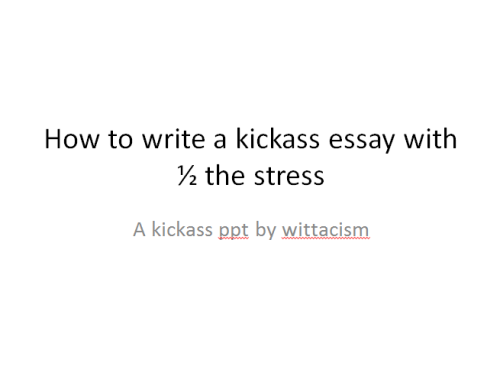


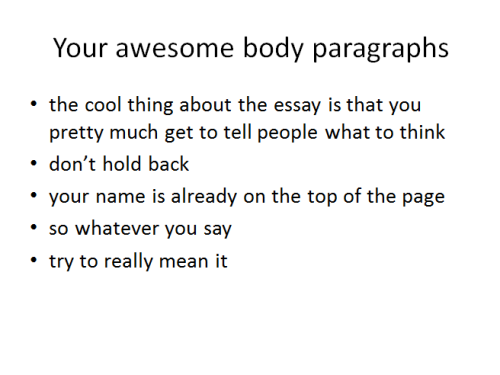
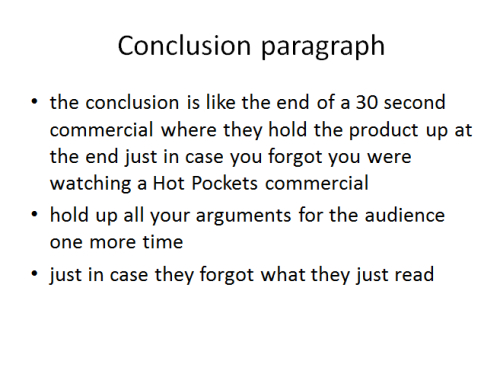
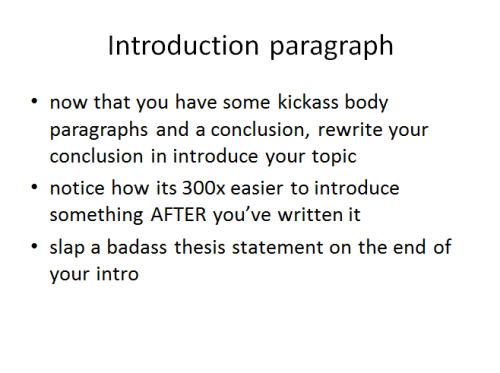
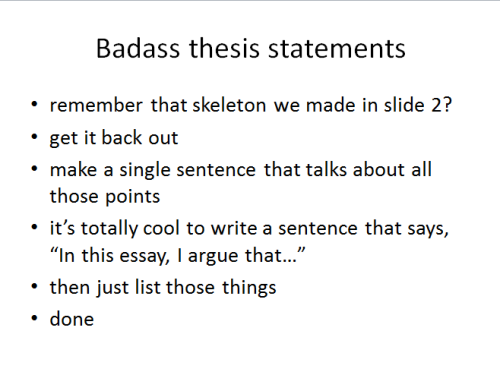
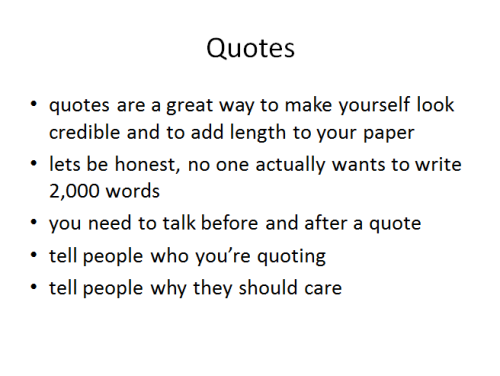
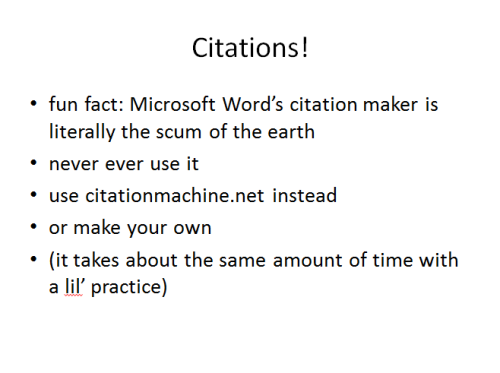

It’s essay writing season for tons of students!
After being a college writing tutor for over a year, I thought I would share my advice with all you awesome people on tumblr. This is how I write essays, but if you’ve got more tips, feel free to add them below.
Happy writing. You can do it!
I think I just spent like 2? Maybe more hours reading this. If you don't like essays or A series of unfortunate events, I would recommend not reading this. However if you do like both, and would like to read an essay about A Series of Unfortunate Events, then continue
What, Then, Does Beatrice Mean? Hermaphroditic Gender, Predatory Sexuality, and Promiscuous Allusion in Daniel Handler/Lemony Snicket’s "A Series of Unfortunate Events"
by Tison Pugh
In many ways, Daniel Handler/Lemony Snicket depicts a setting amenable to female agency and empowerment throughout his A Series of Unfortunate Events.1 The chief protagonist, Violet Baudelaire, moves freely in traditionally masculine fields, and other characters—both male and female—appear remarkably unhampered by stereotypical gender roles and expectations. Roberta Seelinger Trites defines a feminist children’s novel as one “in which the main character is empowered regardless of gender. A key concept here is ‘regardless’: in a feminist children’s novel, the child’s sex does not provide a permanent obstacle to her development” (4).2 From Trites’s perspective, Violet’s freedom from traditional gender roles enables the entire series to take on a feminist cast because such a paradigm of gendered equality is taken as the normative structure of the society depicted in the thirteen novels of the series.
Keep reading